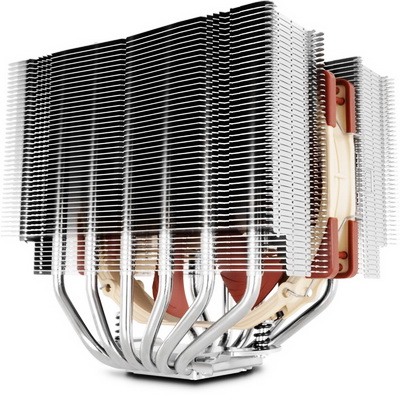INTRODUCTION

If i had to guess what most of your reading these lines right now use to keep the temperatures of your CPUs in check chances are that most of you are still using regular CPU air coolers and why not since they can provide excellent cooling efficiency without asking for much in return like custom watercooling kits and even some AIO models? Unfortunately as I’ve already mentioned numerous times in the past CPU air coolers have reached a level of performance which i really doubt they will ever be able to surpass (AIO solutions might) but in the long run they may not have to since miniaturization (smaller manufacturing process) tends to reduce power requirements and thus temperatures. With the same reasoning in mind Noctua recently announced several "compact" CPU air coolers but for people wanting something more without however having to worry about clearance issues they also released a "tweaked" version of their flagship NH-D15 model which they named the NH-D15S.
Designed in Austria, Noctua's premium cooling components are internationally renowned for their superb quietness, exceptional performance and thoroughgoing quality. Having received more than 3000 awards and recommendations from leading hardware websites and magazines, Noctua's fans and heatsinks are chosen by more than a hundred thousand satisfied customers around the globe.
Compared to the award winning NH-D15 the NH-D15S offers better compatibility with mainboard components and memory modules by using a off-set asymmetrical layout for its heatsink and a single NF-A15 140mm PWM fan (instead of the two found in the NH-D15). This "tweaked" design allows for use of tall memory modules (up to 65mm) even on both sides of the NH-D15S and also offers zero clearance issues with the top PCIe X16 slot (at least with most mainboards). I honestly was expecting Noctua to release a brand new high-end model wearing one or more of their quite impressive industrial grade high-RPM fans (not only because of their RPM but also because they look more "aggressive" compared to their regular lines) but it seems that a single NF-A15 PWM fan is more than enough to do the trick.

 O-Sense
O-Sense







.png)

